How to make a do-it-yourself indirect heating boiler: instructions and manufacturing tips
The presence of a water supply with hot water is part of the usual comfort for a modern home. However, it is not always possible to solve the problem of supplying centralized communications to suburban real estate.
Therefore, owners of private households arrange an autonomous supply of hot water, using a heating circuit as a source of heating. To solve the problem, you just need to build an indirect heating boiler with your own hands.
We will tell you how to make a device useful in everyday life. The article describes in detail the rules for installing and connecting equipment that supplies sanitary water to water points. You will learn how to prepare the boiler for launch and how to put it into operation.
The content of the article:
Indirect heating boiler device
In fact, the apparatus is a conventional heat exchanger.
True, heat exchangers are traditionally built on the principle of “pipe in pipe”, and in this case, the elements of heat exchange are a vessel and a tubular coil. The storage vessel plays the role of an external “pipe”, inside of which is placed an “pipe” internal or a coil.
Passes through a tubular coil heating medium, and the inner region of the vessel is filled with cold water. The heat carrier heats the walls of the tubular coil, and those, in turn, warm the cold water in the vessel.

Scheme indirect heating boiler usually done using counterflow technology of two media, different in temperature level. In other words, if the outlet for heated water is provided in the lower part of the tank, and the cold water feed pipe is higher, in this case the coolant is supplied to the coil at the upper level.
Reverse configuration is performed if the cold water inlet and outlet are reversed. In practice, schemes with an upper outlet of heated water are more common.

Considering that the indirect heating boiler belongs to the thermal plumbing equipment, the apparatus and the piping adjacent to it are subject to thermal insulation.
It is wise to mount the system in close proximity to boiler heating system. This approach will provide less installation costs, and heat losses on the way from the heating system to the indirect heating boiler will be significantly reduced.
The following photo selection will familiarize with an example of manufacturing the simplest indirect heating boiler:
DIY design and installation
The main task at the design stage with your own hands is the selection of the storage tank, which would cover the demand for hot water with its volume.
Storage capacity selection
For most cases of operation of the system, the calculation of the need is done for 3-4 people (average family). According to the regulations, one person consumes about 70 l / day.That is, for an average family, it is enough to install an indirect heating boiler with a volume of 200 liters. With such a capacity, the need is fully satisfied.

A tank for heating cold water is usually chosen for vertical installation, but the option of mounting in a horizontal position is also possible. It is permissible to use a container made of durable heat-resistant materials as a boiler tank.
Of course, the container material should be selected taking into account its high anticorrosion properties, permissible thermal expansion, and other operational characteristics.
Suitable materials include:
- aluminum;
- stainless steel
- special polymers.
It should be remembered: boilers of any type belong to vessels operating under pressure. In addition, the coolant of the heating system can be heated to a high temperature (90 ° C and above). Based on these properties of boiler systems, you should design and build a system with your own hands.
In practice, quite absurd constructions are often found, also made by one's own hands, for example, on the basis of an ordinary milk flask or a dining pan. Such decisions should be avoided.

The design of an indirect-heating boiler, executed by one's own hands, also includes the calculation of a tubular coil. Here it is necessary to calculate the required thermal power of this device in order to determine the length of the coil pipe and its diameter from the calculation results.
Calculation of coil length
The traditional material for the manufacture of boiler coils is copper or brass. It is recommended to choose exactly one of these materials, since both materials have a high heat transfer coefficient.

To calculate the required values for the manufacture of a boiler coil, the formula is suitable:
L = Q / D * (Tg - Tx) * 3.14
The letter designations are here:
- L - tube length
- Q - thermal power of the coil,
- D - tube diameter,
- Tg - hot water temperature,
- Tx - temperature of cold water.
Let's look at an example of how to calculate the length of a copper pipe under a 20 kW spiral for an indirect heating boiler.
There is a copper pipe with a diameter of 10 mm, purchased on the market in the bay. A vessel with a capacity of 200 l was taken under the boiler. The calculated temperatures of cold and hot water are 15ºС and 80ºС, respectively.
It is necessary to determine the size of the length of the copper pipe, sufficient for the production of a heat-exchange tubular spiral with a capacity of 20 kW. According to the formula, the following calculation is carried out: 20 / 0.01 * (80-15) * 3.14. Calculation result: the required length of the copper pipe is 10 meters.
The manufacture and processing of the coil
For the manufacture of an indirect heating boiler coil with a capacity of 150-200 liters, as a rule, a copper or brass tube with a diameter of 10 - 20 mm is taken. The tube is twisted in a spiral, taking into account a residual gap of 5-7 mm between turns.
The gap must be done necessarily (it is allowed to push the turns after winding), since compensation for the expansion of the metal is necessary. In addition, with this design of the spiral, full contact of water with the surface of the copper (brass) tube is achieved.

In principle, copper or brass coils can be found ready for use.For example, take a coil from some technological equipment. But then you have to take into account the size of the available capacity and the correspondence of the spiral in terms of heat transfer power.
Often, selection in exact accordance with the parameters fails. Therefore, in order not to lose precious time in this sense, it is more profitable to make a tubular spiral heater yourself.
It is difficult to make a coil with your own hands without experience, but such a task is feasible. The main thing here is to perform high-quality winding of the spiral. It is recommended to use a drum of suitable material for winding a copper (brass) tube.
The diameter of the drum is less than the internal diameter of the boiler capacity by about 10-15%. As a result, if the inner diameter of the tank is 500 mm, then the diameter of the coil will be: (500 - 500/10) = 450 mm.

On the ends of the tube, twisted into a spiral, you will need to mount contact threaded fittings. To solve this problem it is necessary:
- Get an even cut at the ends of the pipe by treating them with a pipe cutter.
- Slip on the end of the pipe with crimping nuts.
- To process edges of a pipe development.
- Install fittings and tighten them firmly to the pipe with nuts.
It is not necessary to use exclusively threaded double-sided fittings. If you have the skills of soldering copper pipes and the corresponding tool, you can install one-way threaded fittings by soldering.
Also, depending on the material of the vessel body, the option of soldering directly to the walls of the vessel is not excluded. However, with the independent manufacture of an indirect heating boiler, this step is not recommended because of the complex technological operation.
When assembled on fittings or soldered, the heat exchange element (boiler coil) can already be considered ready for installation and subsequent operation. It remains to prepare the place for installation directly on the boiler tank and introduce a water heater into the vessel.
Boiler capacity preparation
How to put a finished copper (brass) spiral inside the boiler tank, if the tank is solid? In this case, it is necessary to carefully cut off the upper part and make a cover that will be bolted to the vessel body.
The seats of the lid and tank are leveled, ground, equipped with a rubber gasket. Meanwhile, the internal installation (and maintenance) seems more convenient if you make two caps on the tank - top and bottom.

After installing the cover on the boiler tank, the problem with installing the coil inside the tank disappears by itself. Now it’s enough to drill two holes on the vessel body, focusing on the location of the end parts of the spiral pipe. The diameter of the holes should correspond to the diameter of the threaded part of the fittings with a margin of 1-2 mm.
The threaded parts of the fittings are passed into the holes, after installing the gaskets. Then, on the outside of the tank wall, counter fittings are wound and the connection is tightly tightened.
With such a fastening, the heating coil is quite stable, but additional supports must be made. The flow of the coolant under pressure inside the pipe is often accompanied by the appearance of vibrations. Additional supports will compensate for the defect.

On the body of the indirect heating boiler, it is also necessary to make holes for collecting and draining water, press in short pipes in them, and install shut-off valves on the pipes.If desired, you can supplement the device with a pointer thermometer.
Having completed the installation of all components, the vessel body is closed from the outside with insulation material. Mineral wool with a top foil coating is suitable here.
Instructions for connecting and starting the system
First of all, a home-made indirect indirect home boiler needs to be connected to the heating main. Where an autonomous heating system is used, boiler include into the network of a home boiler.
Mechanical connection is made with the lid open on the boiler tank. After connecting, you need to open the shut-off valve, which connects with the return line of the coolant, and make sure that there are no leaks both on the outside of the device and inside.

If no leaks are detected, open the coolant supply line. It is necessary to wait some time for the coil to warm up to the temperature of the heating system. In full heating mode, carefully check the coil and all connection points for possible leaks again.
If the check shows the integrity of the system, close the lid of the vessel and connect parsing lines heated water. Test the system in real heat transfer mode.
Conclusions and useful video on the topic
A used gas cylinder is often used to make home-made devices. Presenting a video on how to make BKN from a cylinder body.
Here is described only one option out of all possible that exist and are successfully applied. It should be noted that there are many options for independent designs of indirect heating boilers.
For example, instead of a cylindrical storage tank, rectangular vessels are used. The coil of the coil is made not single-layer, but multi-layer. Supplement the water heater with an electric heating element. Design ideas have no boundaries.
Do you want to share your own experience in the manufacture of an indirect heating boiler or useful information on the topic? Please write comments in the block below. Here, ask questions, express an opinion and post a photo.

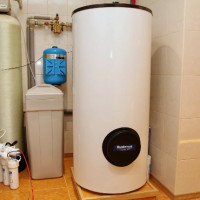 Indirect heating boiler: device, principle of operation and wiring diagrams
Indirect heating boiler: device, principle of operation and wiring diagrams 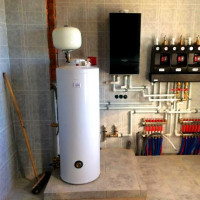 Indirect heating boiler for gas boiler: specifics of operation and connection
Indirect heating boiler for gas boiler: specifics of operation and connection 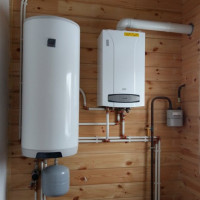 The layout of the binding of the indirect heating boiler + the rules for its installation and connection
The layout of the binding of the indirect heating boiler + the rules for its installation and connection 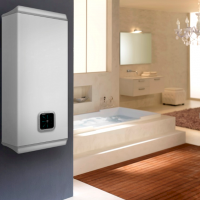 Electric storage boiler for heating water: criteria for choosing a water heater + rating of the best manufacturers
Electric storage boiler for heating water: criteria for choosing a water heater + rating of the best manufacturers 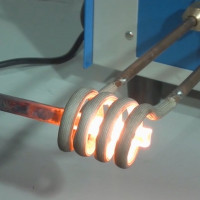 How to make an induction heater with your own hands from a welding inverter
How to make an induction heater with your own hands from a welding inverter 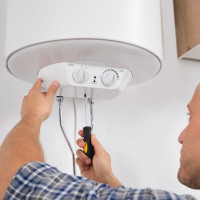 How to make a repair of a water heater with your own hands: methods available for a home master
How to make a repair of a water heater with your own hands: methods available for a home master  How much does it cost to connect gas to a private house: the price of organizing gas supply
How much does it cost to connect gas to a private house: the price of organizing gas supply  The best washing machines with dryer: model rating and customer tips
The best washing machines with dryer: model rating and customer tips  What is the color temperature of light and the nuances of choosing the temperature of the lamps to suit your needs
What is the color temperature of light and the nuances of choosing the temperature of the lamps to suit your needs  Replacement of a geyser in an apartment: replacement paperwork + basic norms and requirements
Replacement of a geyser in an apartment: replacement paperwork + basic norms and requirements
I will not even try to make an indirect heating boiler myself. This is too complicated for me. This is what you need to be a specialist? So many kinds of pipes must be connected, to make some kind of coil there according to the formula to the same. Choose a storage capacity, and then think whether it will flow or not, whether it fits or not, etc. Cook the boiler yourself? I don’t know how to cook at all. Not a welder!
I will not even try to make a nuclear reactor on my own. It’s too difficult for me ...
In principle, it is quite possible to make an indirect heating boiler from a gas cylinder independently. But the other methods are quite complicated, as it requires expert knowledge, without which it is really scary to get to work. The main message of this idea is that it is necessary to gather knowledgeable acquaintances, and by common efforts to do everything right, just can’t do it alone.
The article does not address the issue of inserting a boiler into a heating system. Not a word about the pressure test, but in batteries P> 5 atm. How will you install the device: illegally or officially, with acts of acceptance? In any case, this is a headache. If your house has a common house heat meter, you are shifting the cost of hot water to your neighbors, hardly anyone will like it.
It's all for private homes, don't worry 🙂
It’s not that I can do it; I set myself this goal - at the price it turns out you win some couple of thousand. It’s not worth the trouble.
I think there is nothing complicated about this. He himself did all the heating of the house, including underfloor heating and a water supply system with a pipeline from the well to the taps. The question arose of replacing the boiler.
We have an electrolux for 200 liters. The model is vertical, with dry heating elements at the age of 25 years. The second set of entrails is approaching the finale - it began to drip.
He took an interest in a 200 liter indirect heating boiler with the prospect of connecting to an air-water heat pump. Prices from 400 to 1000 euros.
I decided to buy regular internals for my boiler and implant an indirect heating coil in them. Looked at the options - nothing complicated.
Approach the turner - he will advise any coil for inexpensive. You just need to remove the dimensions correctly and buy a copper pipe. Good luck to all!